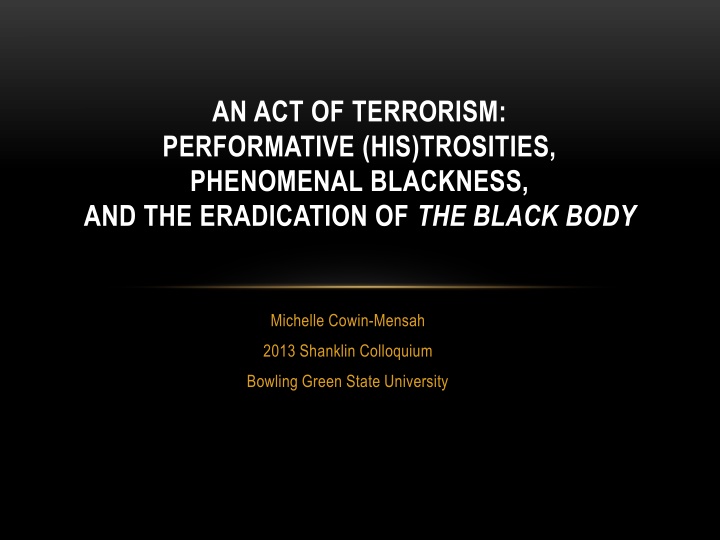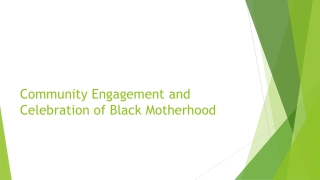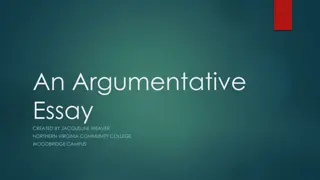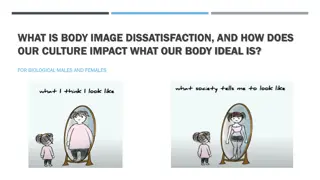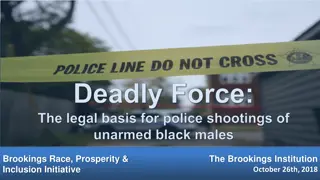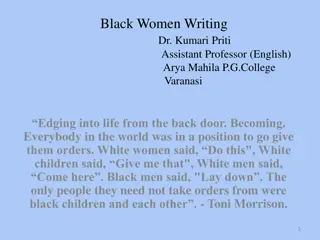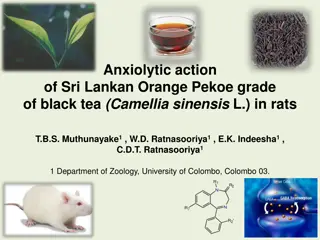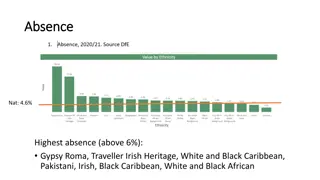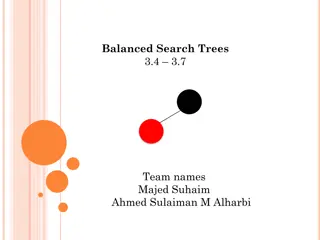The Eradication of the Black Body: A Critical Analysis
Michelle Cowin-Mensah's research delves into the performative aspects of terrorism, racial profiling, and the dehumanization of the black body. Through the lens of performance studies, she explores how societal behaviors perpetuate systemic injustice and erode the emotional relevance of black individuals. The discussion includes the concept of phenomenal Blackness, cultural memory transmission, and the impact of (mis)recognizing the black body in daily interactions. Harvey Young's input further emphasizes the complexities of racial projection and the implications of societal perceptions on black identity.
Download Presentation

Please find below an Image/Link to download the presentation.
The content on the website is provided AS IS for your information and personal use only. It may not be sold, licensed, or shared on other websites without obtaining consent from the author.If you encounter any issues during the download, it is possible that the publisher has removed the file from their server.
You are allowed to download the files provided on this website for personal or commercial use, subject to the condition that they are used lawfully. All files are the property of their respective owners.
The content on the website is provided AS IS for your information and personal use only. It may not be sold, licensed, or shared on other websites without obtaining consent from the author.
E N D
Presentation Transcript
AN ACT OF TERRORISM: PERFORMATIVE (HIS)TROSITIES, PHENOMENAL BLACKNESS, AND THE ERADICATION OF THE BLACK BODY Michelle Cowin-Mensah 2013 Shanklin Colloquium Bowling Green State University
AN ACT OF TERRORISM Fig. 2 George Zimmerman. AFP/Getty Images. Fig. 3 Trayvon Martin. Newscom.
WAYS OF KNOWING Civic obedience, resistance, citizenship, gender, ethnicity, and sexual identity, for example, are rehearsed and performed daily in the public sphere. To understand these as performance suggests that performance also functions as an epistemology. Embodied practice, along with and bound up with other cultural practice, offers a way of knowing. Fig..4 Hemispheric Institute. Diana Taylor is Professor of Performance Studies and Spanish and Director of the Hemispheric Institute on Performance and Politics at New York University.
AN ACT OF TERRORISM Using performance studies to examine issues of social injustice Phenomenal Blackness and Critical Memory Creates the black body as an entity void of sensitivity and emotional relevance. Cultural Memory Transmitting beliefs and principles via everyday behaviors as another way of knowing or assuming knowledge of the other. Fig. 5 Racism (7): Racial Profiling. 2009.
INTRODUCTION Performative (His)trocities Everyday behaviors that are conceived, rehearsed, enacted, and witnessed across time and space with destructive outcomes. Spontaneous historical reenactment of violent and deadly acts (i.e. lynching, witch burnings, racial profiling) which are based on social and cultural mistrust of the native body. The act of witnessing activates these performances of spectacle.
(MIS)RECOGNIZING THE BLACK BODY Phenomenal Blackness: When popular connotations of blackness are mapped across or internalized within black people, the result is the creation of the black body. This second body, an abstracted and imagined figure, shadows or doubles the real one. It is the black body and not a particular, flesh-and-blood body that is the target of a racializing projection. When a driver speeds past a pedestrian and yells Nigger, she launches her epithet at an idea of the body, an instantiation of her understanding of blackness. The pedestrian, who has been hailed and experiences the violence of the address, which seems to erase her presence and transform her into something else (an idea held by another), becomes a casualty of (mis)recognition. Fig. 6 Harvey Young.net Harvey Young is a professor at Northwestern University, where he holds appointments in African- American Studies, Performance Studies, Radio/Television/Film, and Theatre.
(MIS)RECOGNIZING THE BLACK BODY The black body is who we see from the outside perspective. It is the imagined and, yet, highly (mis)recognizable figure who shadows the actual, unseen body. Fig. 7 Panic attack. Photographer: Chrystal Reed. 2005.
EMBODYING YOUNGS THE BLACK BODY Phenomenal blackness: Blacks whom have throughout history been subjected to profiling and violence continue to structure these as embodied experiences with each generation from the enslavement into the present. Critical Memory: Seeks to identify similarities or shared ethnic experiences, which have profoundly shaped the creation of black identity. Past practices that have over time altered the black collective consciousness in terms of how African Americans negotiate and embody these perceptions or images of blackness. Martin s performance as the young black man on the street may have exhumed an past collective knowledge about the iconic black body, creating a resistance to and against those who sought to persecute him; in turn perpetuating the events of his tragedy.
EMBODYING YOUNGS THE BLACK BODY Insofar as native bodies are invariably presented as not speaking (or not making themselves understood to the defining subject), they give rise to an industry of experts needed to approach and interpret them. Like Columbus, many have felt confident that they can interpret the native s gestures and performances. The colonialist discourse that produces the native as negativity, or lack itself, silences the very voice it purports to make speak. The primitive body as object reaffirms the cultural supremacy and authority of the viewing subject, the one who is free to come and go (while the native stays fixed in place and time), the one who sees, interprets, and records. The native is the show; the civilized observer [is] the privileged spectator. Cultural memory, as the societal individual and collective practices are embodied as a culture, is the realization that Martin is the primitive Fig. 8 blackface jpg.
ERADICATION OF THE BLACK BODY The act of witnessing can emerge a form of spectatorship that: can also impact the ways we understand cultural practices as performance. that is active, present, and spurs the inevitable consequences of performative (his)trosities. can aid in the brutality of the event.
CONCLUSION Phenomenal blackness is conditioned on the assumptions and willingness for others to negotiate black identity. Phenomenal blackness and performative (his)trosities are recognizable trends shadowing black culture since the American institution of slavery. Fig. 9 Trayvon Martin Rally. Photographer: Roberto Gonzalez, Associated Press
